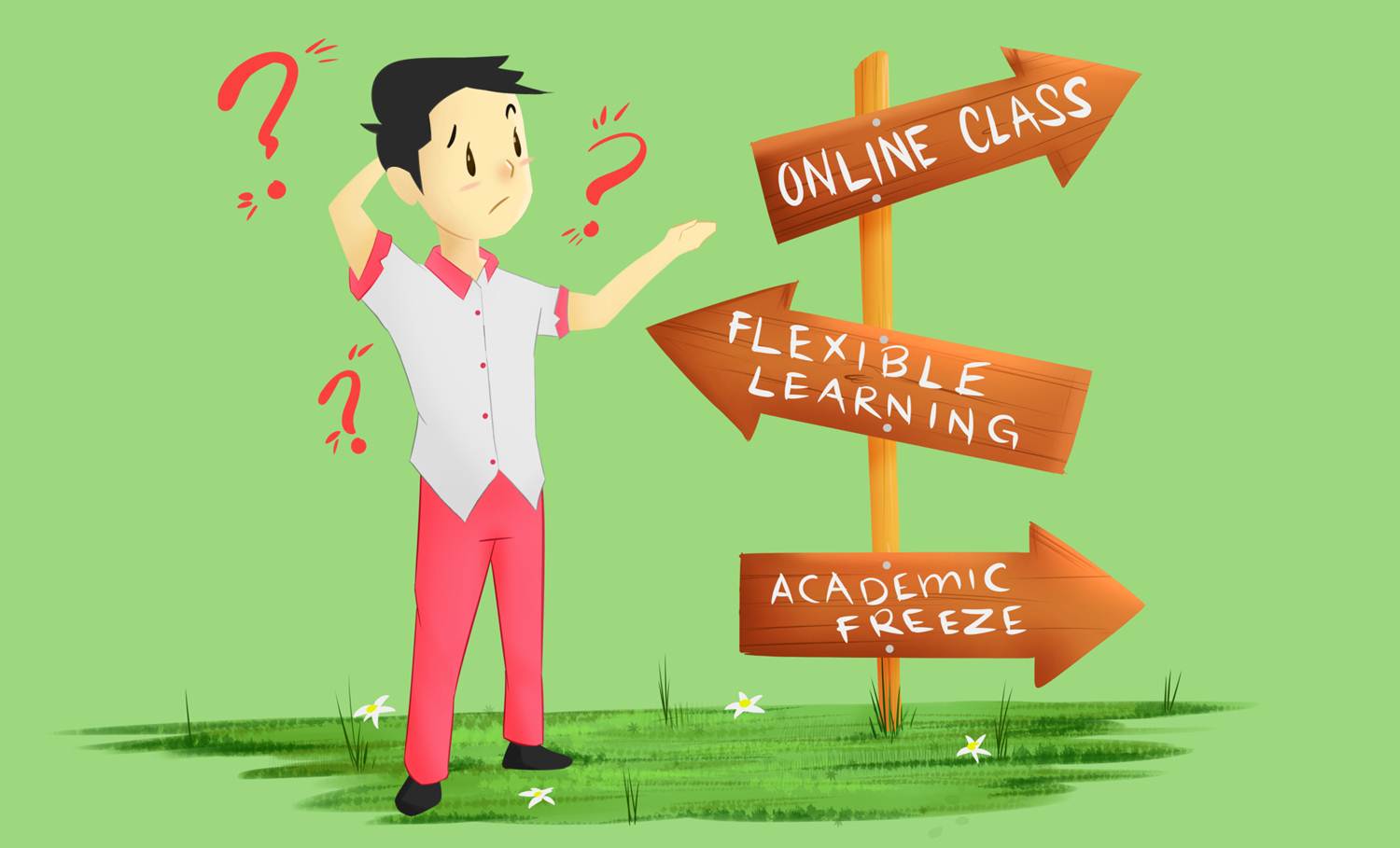In recent news, two students in South Korea have tested positive for the COVID-19 shortly after the country has decided to reopen 66 schools. In Singapore, the country has recorded a spike in their coronavirus cases after deciding to ease quarantine measures. Meanwhile, in the Philippines, a student had to climb a mountain in search of a signal just to submit an academic requirement. Teachers were no exception— a group of them had to set up a camp beside a hill just to attend a webinar for online classes.
These stories are just one of the few scenarios that showed how the COVID-19 pandemic greatly affected the education sector. With the academic season fast approaching, students all over the Philippines are still left clueless on how the national education system would ensure that no Filipino child will be left behind.
There has been an ongoing debate on how the Philippines would proceed with education amid this crisis. Considering that traditional face-to-face learning is still hazardous, the Department of Education (DepEd) and The Commission on Higher Education (CHED) promoted other ways of resuming classes in the country. The government’s primary response for the said educational concern are online classes and flexible learning.
READ: https://rappler.com/nation/printed-materials-online-classes-most-preferred-distance-learning-deped
However, these methods were criticized for its lack of consideration for other students. Academic and youth groups appealed for an “academic freeze” where classes would be canceled whether online or offline. This is until a mass testing for the virus is carried out or until a vaccine is created.
But both DepEd and CHED announced the resumption of classes which are now set to begin this August despite the evident concerns that are yet to be addressed. Students are left with no choice but to settle with what is now considered as the “new normal” era of the Philippine education system.
READ: https://rappler.com/nation/deped-announcement-classes-resume-august-24-2020
With these alternative ways being introduced, this article tries to assess some pros and cons of these proposed temporary learning solutions.
Online Classes
The COVID-19 pandemic introduced the concept of physical distancing as a way to mitigate the transmission of the virus. Hence, the usual face-to-face classes are nearly impossible to implement in this kind of setting.
Online classes are a good way to continue the learning routine of students without going physically to their respective schools. It is considered as a modern method of instruction that has already been practiced prior to this pandemic.
However, it drew strong criticisms from students, teachers and parents as it lacked inclusivity in general. Students who are financially unstable struggle with this form of education. Gadgets such as phones, tablets, laptops, desktops as well as a stable internet connection are required to successfully and effectively attend an online class. A cheap and decent smartphone can cost up to 7,000 to 10,000 pesos while a stable internet connection would require a monthly payment of around 1,500 pesos. Even small data packages that enable basic web surfing can cost up to 50 to 100 pesos. A small price to pay for the privileged but a torturous nightmare for the poor.
The money invested for a single online class is enough to feed a family in the slums of Tondo for a month. The idea of online classes is good but to force it into every student’s situation is unfair. A parent who only earns 200 pesos a day would never think of a smartphone as something that his/her family needs. Not all can afford the materials needed and there are necessities that are much more important for a family that struggles to survive each day.
Flexible Learning
Flexible learning is defined as the method of learning where a student can choose how, what, when, and where they want to learn. Some schools have adapted it in a form of modular learning where students are given work modules for their subjects. In this way, it can cater the issue of weak internet connection in the country and give partial consideration to the poor.
However, it provides a weak foundation on the learning of every student. There are various cases where even face-to-face classes do not make a learner fully understand the concepts being taught— what more could a lifeless module do? A student may struggle with understanding lessons that would require clarifications from teachers. With their absence, students may possibly fail to grasp the lessons provided on the module.
It also puts additional burden for the parents since modular learning implores their help in supervising their children’s work. For some parents, this might not be a problem. For some who tirelessly work all day under a “no work, no pay” agreement, helping their children on their school work will be difficult to prioritize. Putting food on their tables will always be their primary concern.
The government also suggested using televisions and radios as a medium of learning. However, this plan of theirs is still vague especially on how it will successfully execute the approach.
An alarming scenario could also be expected in tertiary education and graduate school. Even with online learning, skills-based degree programs such engineering and sciences are certainly ineffective if modular learning is applied. The rigorous practical training for these courses are hard to imagine in both non-traditional learning methods. The unavailability of laboratory materials and absence of professional supervision provides a feeble training for the students. If forced upon the undergraduate and graduate students, this country might produce a weak human resource in the near future.
Academic Freeze
Implementing a nationwide academic freeze is probably the most reasonable among all approaches. In a nutshell, it saves students from the burden of unstable internet connection, unreasonable tuition fees, and half-baked learning.
However, it might also not be healthy and ideal in the long run. A scenario where students becoming “stagnant” is possible. The enthusiasm to learn may slowly decrease as students spend more days in their homes with no academic works and assignments to focus on.
Academic freeze might also encourage other students not to return to school, especially with students coming from poor families. They are one of those people who took the initiative to find a job amid this crisis so that they can help their parents with their everyday needs. Without the presence of academics, students may forget the importance of education and will be less likely to enroll in the next semester.
Even situations concerning sensitive issues may also arise as students spend less time in school or with schoolworks. Cases of teenage pregnancies, domestic violence and harassment, as well as drug abuse may increase especially in families who already have a history with such problems.
Where should we go?
Apparently, we need to admit that traditional face-to-face learning is still the most ideal form of education. But because of this pandemic, it is no longer in our best interest. The only thing left to do is to urge the government to improve the current situation and gradually end this pandemic once and for all. It is the only way to save the students, parents, and teachers from the misery of unprepared and forced education.
If the government can successfully flatten the curve, each sector of the society will slowly be able to revert back to its normal state— a better scenario for all Filipinos who are still hoping for a better Philippines.


